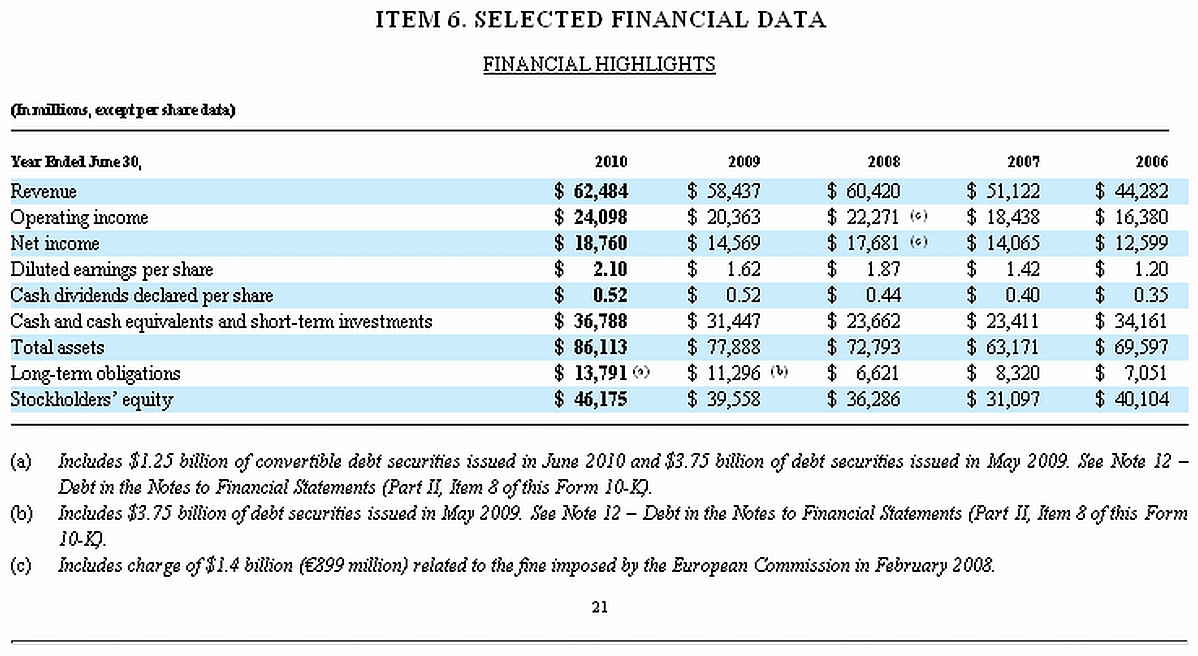What is Fundamental Analysis
Fundamental analysis is a way of evaluating a company through research done on company’s fundamentals like their earnings, economic situation, assets, news, management etc. You then check if the company’s value which you found is reflected in the current share price. If it is not, the fundamentalist will then buy or sell shares of the company’s stock until the price corrects itself to its true price. Fundamental analysis only works on a long term horizon, because the price often can take a long time to adjust itself. This is often referred to as investing and not trading. It can take everything from a few days up to a few years. So other than in technical analysis, fundamental analysts actually care about the actual business of a company. Fundamental analysis is not only applicable on companies. It is also applicable to industries or even the entire economy.
According to fundamental analysis there are two factors defining a company’s true price:
- Quantitative Factors. Factors which are measurable in numbers (for example profit, staff members…).
- Qualitative Factors. Factors which are not measurable in numbers (for example quality of staff, quality of products…).
Basic Fundamental Analysis
Let’s get into the different factor defining a company’s true value. I will start with presenting the qualitative factors:
Business Model. The business model of a company is possibly one of the most important things. It tells you what a company actually is doing and want to do, how it makes money and more. The business model of a company can usually be found on the websites of the specific company or in the annual 10-K (The 10-K is an annual report that summarizes the company’s financial performance. This report is required by the SEC (Securities and Exchange Commission). Additionally, there also exists a 10-Q report, which is the same as the 10-K filling, just for every quarter). If you are planning in investing in this company, you definitely should have a good understanding of its business model and you should like it. The business model could give you a good idea of what will create future growth in a company.

Competitive Advantage. The competitive advantage of a company is extremely important for long term success. A competitive advantage can be gained through many different things: better effectiveness, unique position, clear strategy for longer term etc.
Management. The management is the leadership of a company and can steer the company in different directions, thus it is essential to look at the management of certain company’s. Information on the management can usually be found on a company’s website. You should look at a biography of the management, education, achievements and former positions (good management of other company’s ?).
Fundamental Analysis of Industry
Looking at the industry which the company performs in, is equally as important as looking at the company itself. A company can be great, but if the industry the company performs in is dying this won’t matter.
Customers. Look at the number of customers in this industry and compare it to other industries. For additional comparison, you could check the last few years to see if there is a growth in the number of customers. Logically the more customers, the better.
Market Share. Find out how big of a role the company plays in its industry. Is it a monopoly or does it have no influence at all?
Competition. Check the numbers of competitors and the dominance of the company. For reference, you may want to check other industries as well.
Regulation. How regulated is this industry and what are the regulatory costs? Some industries are regulated much more than others.
Financial Statements
Besides all the qualitative factors there also are important quantitative factors. These are concrete numbers showing the financial performance of the company. The quantitative information can be found in various financial statements:
Balance Sheet. The balance sheet is the statement which includes a record of all the company’s assets, liabilities and the equity. In easier terms assets are the resources a company controls (buildings, machines, vehicles, cash…), liabilities are the company’s debts and equity is more or less the difference of the assets and liabilities, what shareholders own… When looking at the assets, it is important to look at the distribution of assets. Sometimes it can be better for a company to not have a lot of cash, but more inventory. Usually if companies have a lot of unused cash lying around, it is a sign that they don’t know how to use this cash to grow. But too much unsold inventory is not good either. The company should ideally be selling all its inventory and replenishing it all the time. When talking about Liabilities, it is best if the company does not have too much debt. But even more important is if the debt is growing or falling. If the debt is rising, this means that the company does not earn enough to pay for everything, which of course is not so good. But note that the debt shown on a balance sheet is not always equivalent to the actual debt of a company. Sometimes you have to dig a little deeper to find a total correct number. For Equity, it may be a good idea to look at the distribution of the equity. Who owns how much of the company? What happens with the earnings? Are they reinvested in the company or paid out etc.
Income Statement. The income statement contains all the data about a company’s actual financial performance in form of revenue, expenses, profit and more. The Revenue is basically the money made in a certain period of time. This is often divided into geographical or sector revenue. Revenue may be good if it is a big number, but more important is to look at the long term revenue. Good companies consistently earn a fair amount of revenue. There are usually two categories of Expenses: Production expenses and other business expenses. The first category (production expenses) contains the cost of producing the goods which the company later sells. The second category basically contains all the other expenses like marketing, salaries, technology, research, taxes, development etc. Profits are calculated by subtracting the expenses from the revenue. There are tons of different types of profits. But there always should be a net profit (aka. earnings) which is calculated from all the expenses and the entire revenue. Logically the more money a company makes, the better.
Cash Flow Statement. The cash flow statement gives you an overview of the cash flow of the company. It should show you where the money is coming from and where it goes out again. In other words the cash flow statement gives you an idea of how the money is used. Inside of the cash flow statement there again are many different cash flow subcategories to look at.
All of the above and more reports can be found inside of the 10-K fillings. I would recommend to always compare all the info found to similar/competitor companies in the same industry. This is a good way to get some references and it gives you an idea if the numbers are good or bad. Sometimes it can be extremely hard to know if some of these numbers actually are good or rather bad.
Valuation
The valuation is probably the most important step in fundamental analysis. This is where you try to put all the information gathered in one. You then look at the current trading price of the security and compare it to your value. If you think the company is worth more than it is currently trading for, you buy the stock.

Is Fundamental Analysis Dead/Does Fundamental Analysis Work
Even though I am no expert on fundamental analysis I still have my opinion on it. I never really use fundamental analysis in my trading. This has various reasons. One being simply that fundamental analysis is not suitable for my time horizon. I don’t trade super short term, but not super long term either. I usually enter trades around 30 days before expiration and fundamental analysis won’t help me in this short time period. But even if I would trade long term I still wouldn’t use fundamental analysis for my trading. This is because I just don’t see where someone can gain an edge with fundamental analysis in today’s markets. Every single day millions of people trade and millions of people have access to all of this fundamental data. So it is extremely hard to find anything that no one else has found before. Therefore, I don’t think you can have an edge with this information. Besides that, many other professional traders sometimes have so called insider information or just get this information earlier than the public, so it is vastly unlikely that you find anything new. Additionally, I find that some of the steps are quite subjective. For example the qualitative factors all are completely subjective. Just because you think that these factors are good on a company doesn’t have to mean that someone else think so too or that they actually are. The same counts for the valuation. This is just my opinion. There still are many profitable fundamentalists that would disagree with me. But fundamental analysis is definitely not for everyone.
Who should use Fundamental Analysis and When should it be used?
First of all if you plan on using fundamental analysis for your trading you have to be a long term trader. You have to have a buy and hold trading plan. In most cases the correction of the price won’t happen very fast, if it will happen at all. Therefore, you have to be patient. Otherwise, you also should like this kind of research. Reading through all these financial reports is not something for everybody.
Otherwise, it actually is not a bad idea to combine fundamental analysis with technical analysis (more on technical analysis here). Many fundamentalists actually do that. For example some use fundamental analysis to get an idea of the long term direction of a security, but use technical analysis for the short term trend and to time the entry.
Actually most traders already use fundamental analysis to some extent. If you are a trader, you probably use some fundamental analysis, even if you don’t know it. This is because you probably watch out for the news. For most traders it is important to have a good market awareness and to know what is going on in the market and the world. This is important because many things affect the market. Examples: attacks, wars, elections, referendums, acquisitions etc.
Finally, I would also recommend fundamental analysis if you are not trading liquid and well-known securities. I only trade very liquid and very well-known indexes, ETFs and stocks. But if you don’t do that it is a very good idea to check a company before investing anything into it, even for shorter term trades.

Fundamental Analysis for Options
I already can say that most profitable option traders probably do not use fundamental analysis. This is mainly because most people trade options on a short term basis. Additionally, you would probably want to buy options if you believe a company’s price is going to go up in the future. But if you buy options time works against you. Your option contract will constantly be loosing some money. As someone who thinks that the price will go up in the future, but you don’t know when, this really is not good. But if you want to use fundamental analysis for options, you have to buy very long term options (LEAPS), because it often can take years before your directional assumption works out.
I’m an option trader as well and I don’t use fundamental or technical analysis in my trading. This is because my trading style (and the style of many other successful option traders) relies on probabilities that have proven themselves again and again. I usually don’t really care if a stock price goes up or down, because I trade range bound. If you too want to learn how to trade like this, you should check out my education section. In the intermediate course I will present my entire option trading strategy.
This article was just a general introduction to fundamental analysis. The purpose was to give you an idea of what fundamental analysis is, who it is for and when to use it. If you want to use fundamental analysis to find a good investment, this article will not be enough. You should definitely inform yourself more before you choose any security to put your money in. I only touched on how fundamental analysis works and explained all the different steps very briefly.


Yes, I agree with you. I do trades myself and do not use fundamental analysis to make my decision. However if I have some doubts about the company and whether I should invest into it, can look at the history of the trades, history of the company, its management and can have a brief look at the last 2 years financial. I agree that this analysis is more of a longer term nature and if somebody prefers short trades then it is definitely just a waste of time.
Hey Anna,
Just like you said, it really depends on the time frame. But it is always a good idea to have somewhat an idea in what sompany you currently are investing. The reason why I don’t do this is because I only trade very liquid and well known indexes, ETFs and stocks. I never really open positions in any unknown and unliquid securities.
I think it is essential to do fundamental analysis to make your trading decisions. It can be too risky to not – and as Warren Buffet said – the first rule of business is to not lose money! And the second rule is to not forget the first.
Because we want to maximize returns, we can rush. But especially for long term trades, the more fundamental analysis the better.
Hey Rose,
Thanks for commenting. You’re right, most people want to earn as much money as possible and therefore trade super short term. On this short term basis fundamental analysis really does not make any sense. First when you begin to trade longer term, fundamental analysis can help you.
Thanks for your insight and experiences.
You’re Welcome Tony.